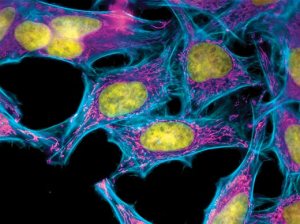Did you know that some human cells can live and reproduce outside the human body? Did you know scientists can use these types of cells for research and find cures to many ailments? Well neither did Henrietta Lacks – she was an African-American tobacco farmer from southern Virginia who lived in the 1930s. Henrietta contributed in a substantial way, albeit unbeknownst to her, toward the treatment and cure of many diseases that disproportionately affect African Americans. Who was this woman? And how is it that she made such grand contributions? How could this happen without her even knowing?
In a conversation with my daughter, who, like myself, is an avid reader, I learned about this woman’s intriguing story. My daughter read a book about Henrietta written by Rebecca Skloot called The Immortal Life of Henrietta Lacks. Henrietta Lacks, a mother of five, had her cells taken when she was diagnosed with cervical cancer at the age of 30. During the course of her treatment, one of her doctors discovered something very unique about the cancer cells he removed from her body. Her cells, of a type subsequently named the HeLa cell, were the first “immortal” cells to be discovered; meaning they were able to be replicated indefinitely in cultures in a lab. Her cells never died! The HeLa cell has been used in numerous research projects since then. They have yielded important discoveries connected with the treatment of polio, cancer and HIV, to name a few. They have also played a role in gene-mapping and have been used to develop vaccines to prevent other diseases.
The discovery of these cells wasn’t the only amazing part of Henrietta’s story. She was also never told how critical her cells were to future generations. She died not knowing anything about the HeLa cell; nor did she or any of her family members ever receive compensation – though many people have made fortunes off HeLa cells.
Henrietta Lacks’ ‘Immortal’ Cells
In this picture the HeLa cells were stained with special dyes that highlight specific parts of each cell. The DNA in the nucleus is yellow, the actin filaments are light blue and the mitochondria—the cell’s power generators—are pink.
© Omar Quintero
As an African American, I think we have a posthumous hero in Henrietta Lacks. It would be fitting for us to honor the memory of Ms. Lacks by taking better care of our health. Many health disparities like high blood pressure, heart disease, diabetes, and HIV, disproportionately impact African Americans and are at least partly due to unhealthy behavior choices. Some of these things are within our power to change.
I’m going to make a commitment to healthier nutrition, more movement and exercise, and less cigarette smoking. In the long run, these things are sure to improve our health outcomes. Won’t you join me?

